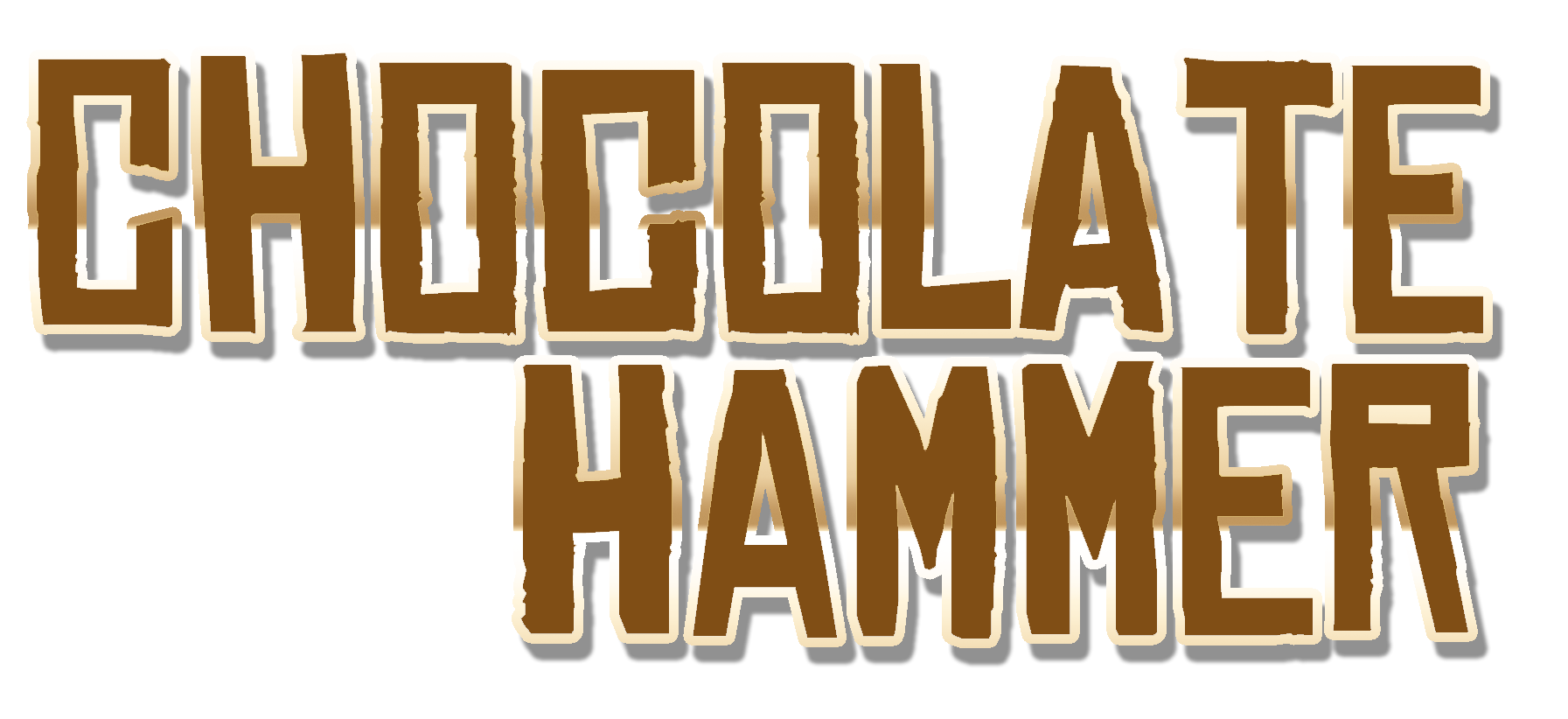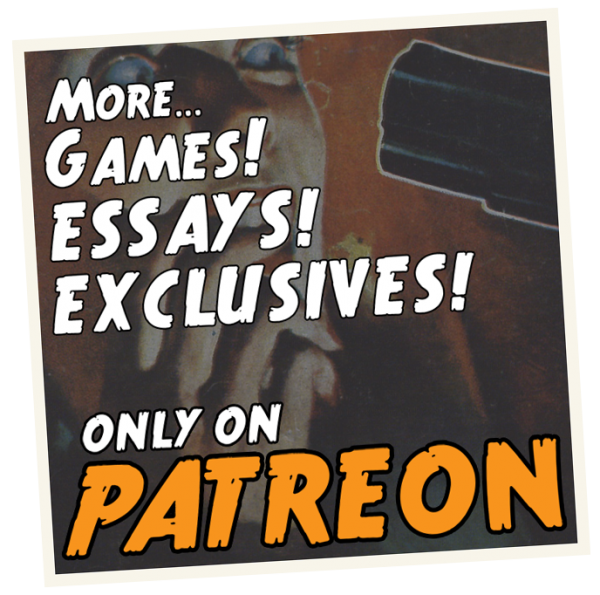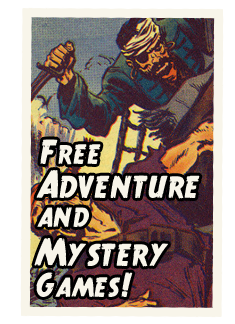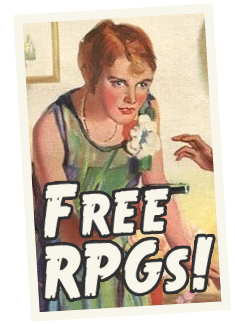World Creation Part 2: The Big, Blurry, Bright-Colors Picture
This is the second part of the World Creation series, in which I create a fully-functional campaign setting out of common household materials. This week, I deal with the most basic elements of the setting: the overarching themes, the general flavors, and even a few of the details of the setting that will form a nice foundation for the future. Think of this as the underpainting, establishing the basic form so that details can be layered on top.
Also, this is going to be a little long. I’ll make you a deal: if you make like you’ve read the whole thing, but don’t mention any details? I’ll change the subject real smooth-like, and we avoid any awkwardness. On the other hand: if your chair is comfy, you’ve eaten recently, you’ve paid your respects to the call of nature within the past few hours and your sanity is blessedly resistant to my gibbering, endlessly cascading walls of text, then by all means, read on.
Once I had the basic idea of what kind of world I was creating—i.e., steampunk—I then sat down to a very stream-of-consciousness, freeform creation session.
First, I considered what kinds of ideas and concepts I wanted to explore.
It seems like it’s an ironclad rule of any novel, TV series, movie, game, or any other form of media known to man. There’s a sort of eternal struggle taking place between two distinct sides: in this corner we have Nature, Pretty Bunnies, Sunshine and Goodness, and in this corner we have Technology, Industrialism, Smog and Bad Mojo. Everything wrought by Nature is pure and wonderful, anything that is within the purview of man is not, and the two sides are always in direct opposition. Exceptions are so rare as to be nearly nonexistent.
Problem is, we’re so wrapped up in these themes that we don’t often look at them objectively.
In our haste to demonize our own advancement, we often lose sight of exactly how many ways an industrial, modernized society has improved the lives of the average person. Almost every field in human existence has benefited from it: new innovations mean new ways to maximize crop output and distribute food, new ways to fight disease, new ways to create and spread artistic expression, new ways to communicate globally and bring our society together.
In creating my world, I want to add some much-needed complexity to the often oversimplified issue.
With these themes in mind, I begin brainstorming. I envision a government, large and sprawled, in a wasteland with few resources. The government, which is based around technology, is dedicated to acquiring the resources and distributing them evenly among the cities.
Let’s say that within the past thousand years or so , some disaster happened that made coal, water, metal, arable land, etc. fairly rare, except in certain locations. The various city-states and small empires of the world, sprawled out across the ravaged landscape, had no real way of getting resources outside their territory. Some cities degenerated into chaos, some engaged in outright warfare with neighbors over resources, some tried to trade the necessities amongst themselves.
At some point, the new government stepped in. Claiming supremacy over all civilization, it began marching armies into the capitals of all the other factions. Possessing almost supernatural technology, this new government quickly became the supreme leader. Surprisingly, however, once it had complete control over all the major factors, it largely left the preexisting local governments in place. Instead of reigning like tyrants, the members of this government only seized what power was necessary to establish garrisons, distribute evenly the scattered resources, establish academies of science and technology and pacify any dissenters. It gave the cities more or less free reign to do as they pleased, so long as it did not contradict these goals. For over half a millennium, the government has been the only real unified force in the world, and has had to deal only with minor-scale rebellions, resource crises, raiders, etc.
What we have here is a very subtle presentation of the good and bad parts of modern society: unity, increased survival rate, and general world order are balanced by lingering dystopian and communist themes. Still, the government appears more good than bad, which will hopefully provide a breath of fresh air to the reader. Also, this setting offers up several complex issues to explore: when is the government overstepping its boundaries? What percentage of freedom sacrificed by the citizens of each city is acceptable to maintain order, if any? What obligations do the citizens have to the overarching government, if any?
Also, the whole technology-powered government thing sets up the whole improbable technology steampunk angle, which is convenient. In any case, I think the actual structure of the government merits a closer look before I move on.
So far, we have a sort of decentralized organizer of a government, something that gives general instructions and does organization without really ever seizing the reins directly. Really, less of a tyranny and more of a steam-powered PTA, except, perhaps, slightly less overbearing and prone to violence. To me, this setup suggests a council, with the central leader being a moderator for a group of rulers. Each city has a sort of overseer (for whom the name “Magistrate” suggests itself) that convenes occasionally to deal with administrative issues. I decide that the magistrates are the original leaders of the new government, who have prolonged their lives and sharpened their wits through the extensive, genius use of technology.
(Up until this point, I’d been fairly general. However, when I started imagining the magistrates, a few ideas popped up that I jotted down. For example: each one has parts of their vital functions (brain, lungs, liver) replaced with machinery, and this has had the dual effects of making them more long-lived and causing them to be slightly…off. Each one is a little different: one of them appears basically senile, easily persuaded. One of them seems normal, but gets disproportionately and violently enraged when in the presence of plant life–tree bark, vegetables, etc. One of them is quiet, and sporadically shares fantasies or thoughts that range from bizarre (“I really wish I had a waistcoat made of treacle, in which I would stride like a glossy, besweetened god.”) to disturbing (“And…hmm. If you don’t mind me saying, your skull is the exact dimensions of the ideal ashtray.”) I definitely need to come back to these. )
So, this looks decent so far. Let’s introduce conflict, shall we?
Obviously, it doesn’t make sense to have every single human being be under the thrall of this world government. Some factions would resist, some would avoid the government, some would be too small, isolated, or worthless to merit domination. These would be smaller, cut-off organizations, ranging from ramshackle city-states to roving bands of raiders that prey on the supply lines of the government. Most would be small fry, but some would steal valuable technologies and use them to better their situation. Once in every few decades, an upstart city-state will need to be put down, which the government does without hesitation or mercy. Some upwardly mobile factions are assimilated into the new world order. Sometimes, this is even done willingly. Those that resist consistently and effectively are eventually routed or destroyed, which has discourged most rebellion for decades.
So the government is looking pretty unstoppable at this point, smug and secure, standing unchallenged at the height of its power. Let’s shake it up a bit.
I decide that nobody really knows what caused the cataclysm of the past. Some people have their theories, of course, but the history has been completely lost. However, one tribe of barbarians outside of civilization believed that the exact same technological tomfoolery indulged in by the government was responsible for ravaging the world—a world that was, previously, a paradise. This tribe believed that we as a species should be reduced to simple hunter-gatherer living, and that any other advancement was a mistake and a blasphemy rolled into one.
They believed this very strongly. Strongly enough to conquer the neighboring barbarian tribes, quietly usurp isolated city states, and force captives to fight for their cause. Silently, they gained strength. At some point, the government vaguely heard of them, but dismissed their movement as trivial.
Recently, however, a border city of the government fell. No warning or explanation. One morning, an airship loaded with coal swung in, and beheld a sight that would chill both ruler and subject alike in the government—the border city was a blacked, lifeless shell, with the symbol of the upstart empire carved into the ashen surface of the airship tower. Suddenly, the government has a new, mysterious opponent—one that could drop a city far more technologically advanced than itself. How?
Right. So far, we have a basic setting fleshed out. Now for the fun part—the details.







I made it through the first reading (only one call of nature break). So far, very interesting. Reminds me of Jared Diamond’s Collapse in a way. The environmental, social, political, and economic forces you’ve set up seem realistic. Can’t wait to see some of the details.
[…]Let’s say that within the past thousand years or so , some disaster happened that made coal, water, metal, arable land, etc. fairly rare, except in certain locations. The various city-states and small empires of the world, sprawled out across the ravaged landscape, had no real way of getting resources outside their territory. Some cities degenerated into chaos, some engaged in outright warfare with neighbors over resources, some tried to trade the necessities amongst themselves.[…]
This paragraph reminded me of the dark sun campaign setting. If you’re not familiar with it, it is a world where magic is fueled by life. Meaning that every time magic is used, stuff around it dies. Overuse of magic has led to the whole world becoming a massive desert with a few city-states formed around the few oases that can still support life.
I’m loving the world so far. Gonna go check out the next part now.
I had heard about Dark Sun, although I’d never played it, not even in my 2E days. It was referenced in a few race sourcebooks I had.
“Wasteland” could probably describe some 80% of this world.
Im a major fan of steam punk, and a bigger fan of gray issues im loving your world already.